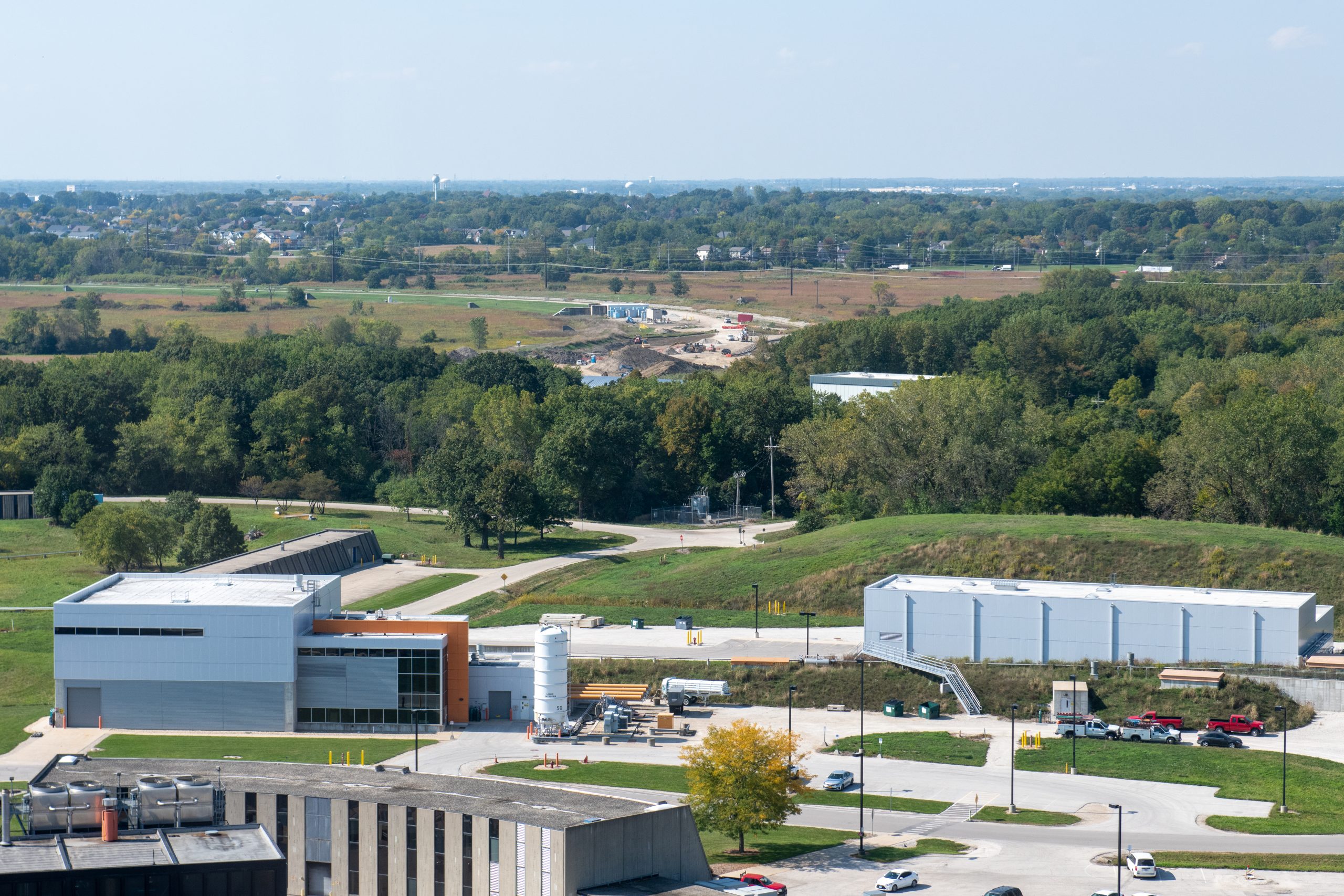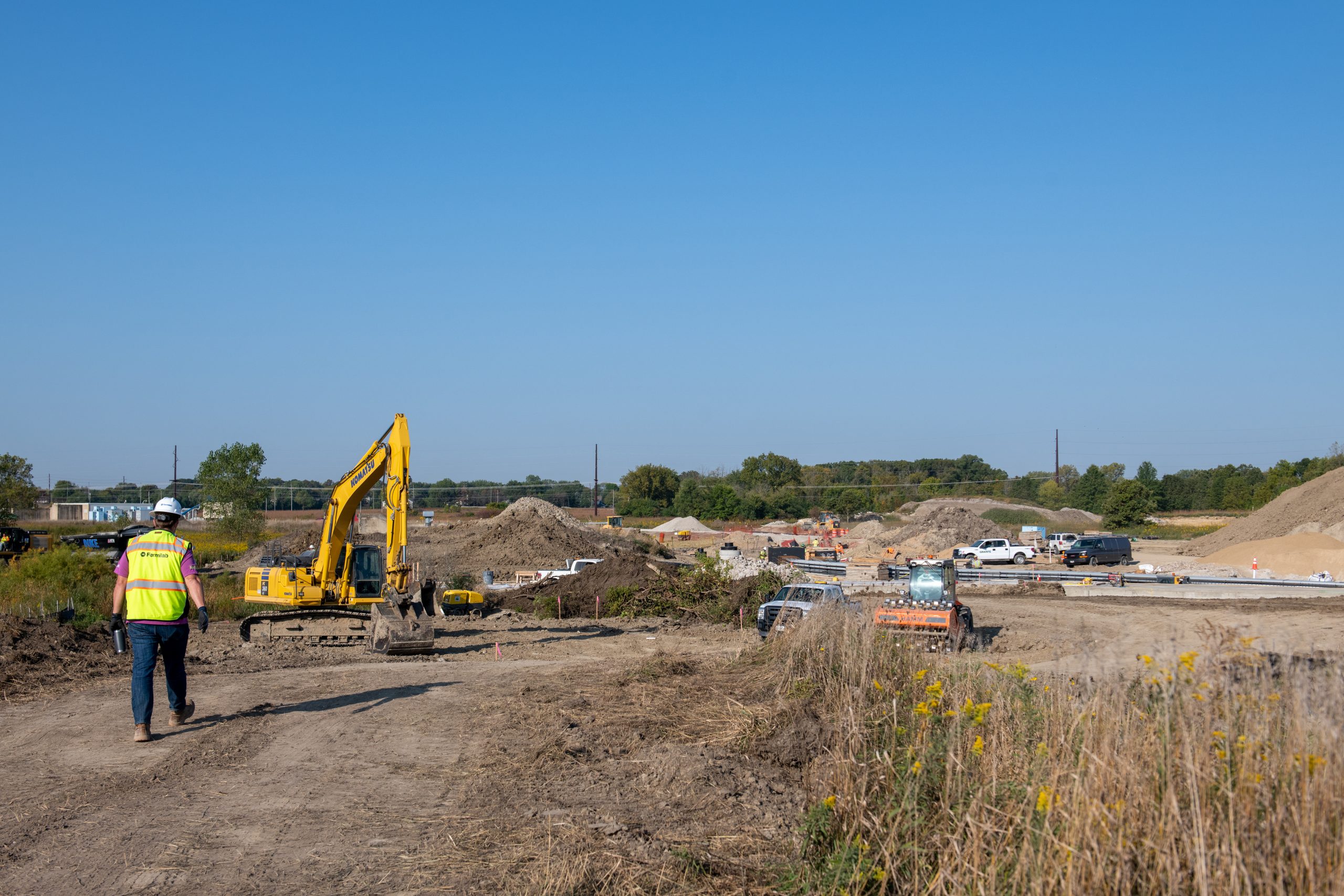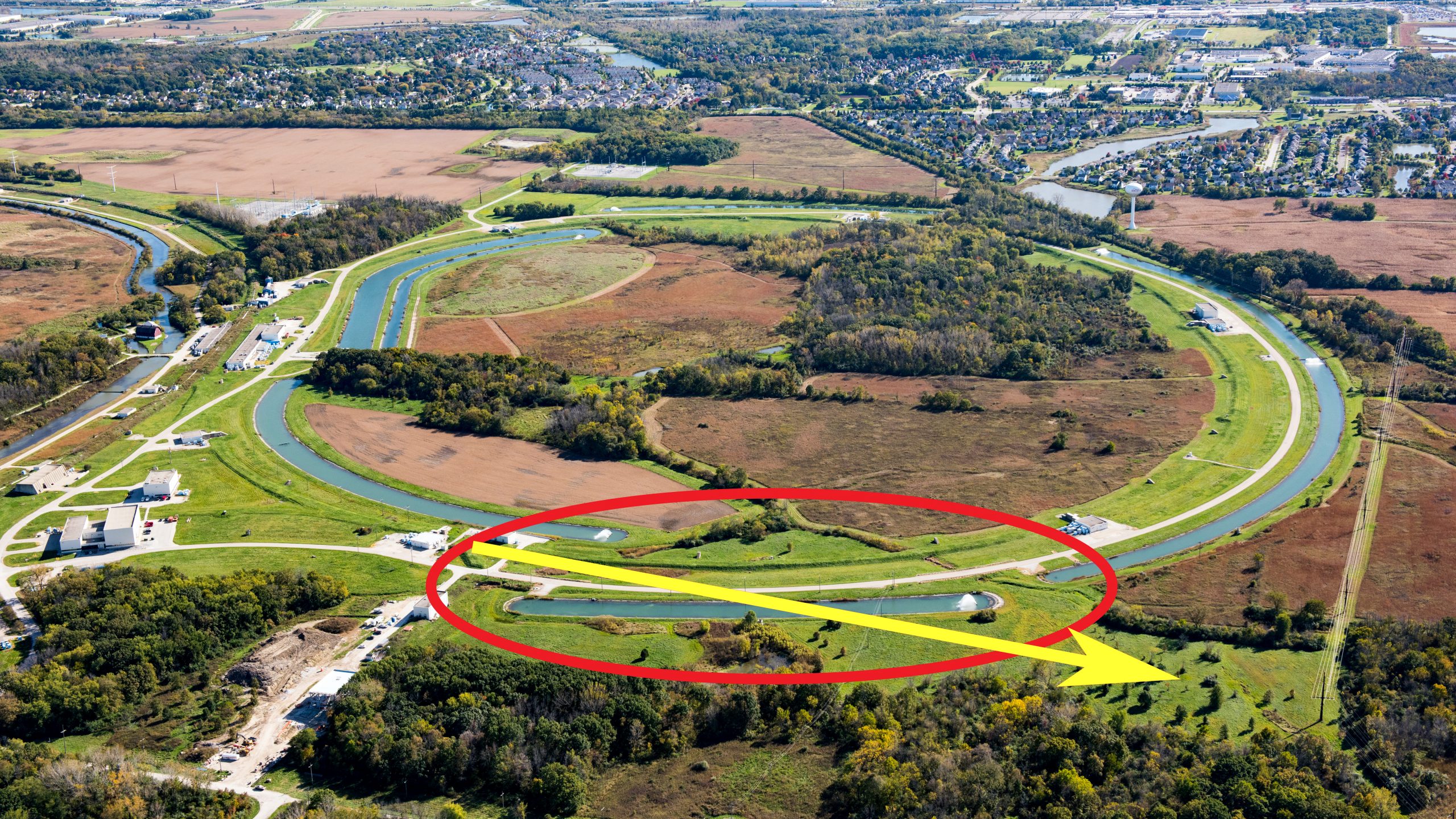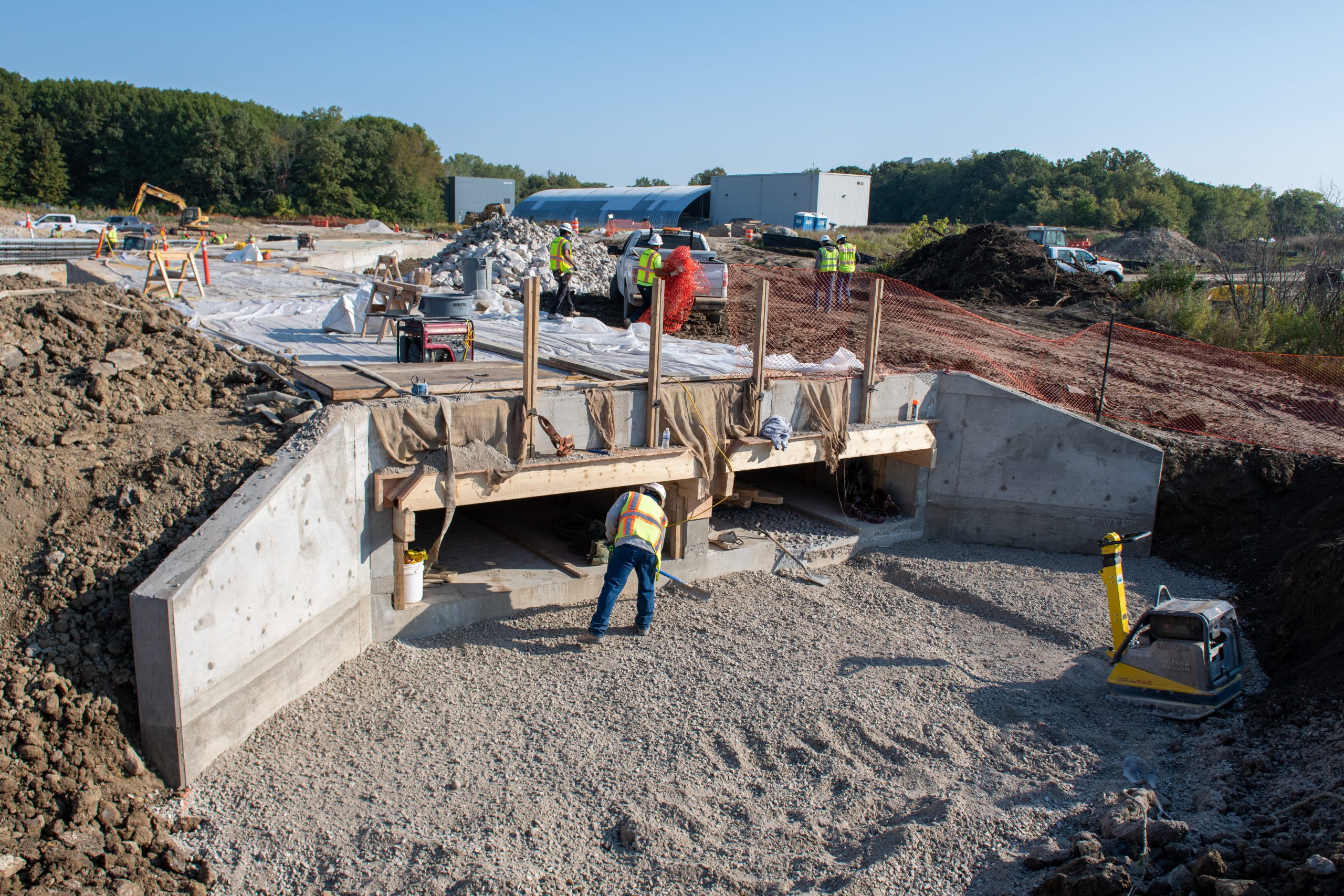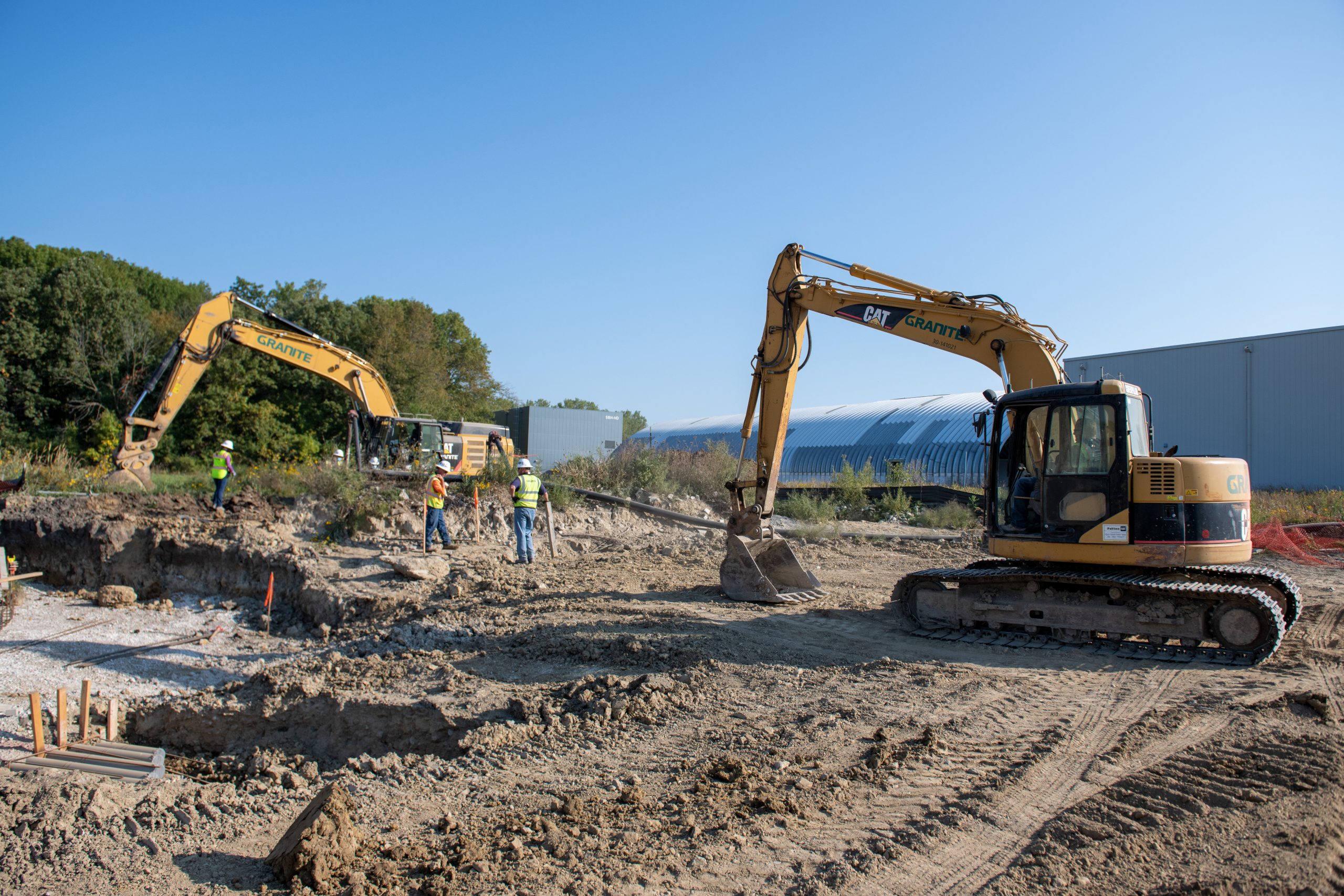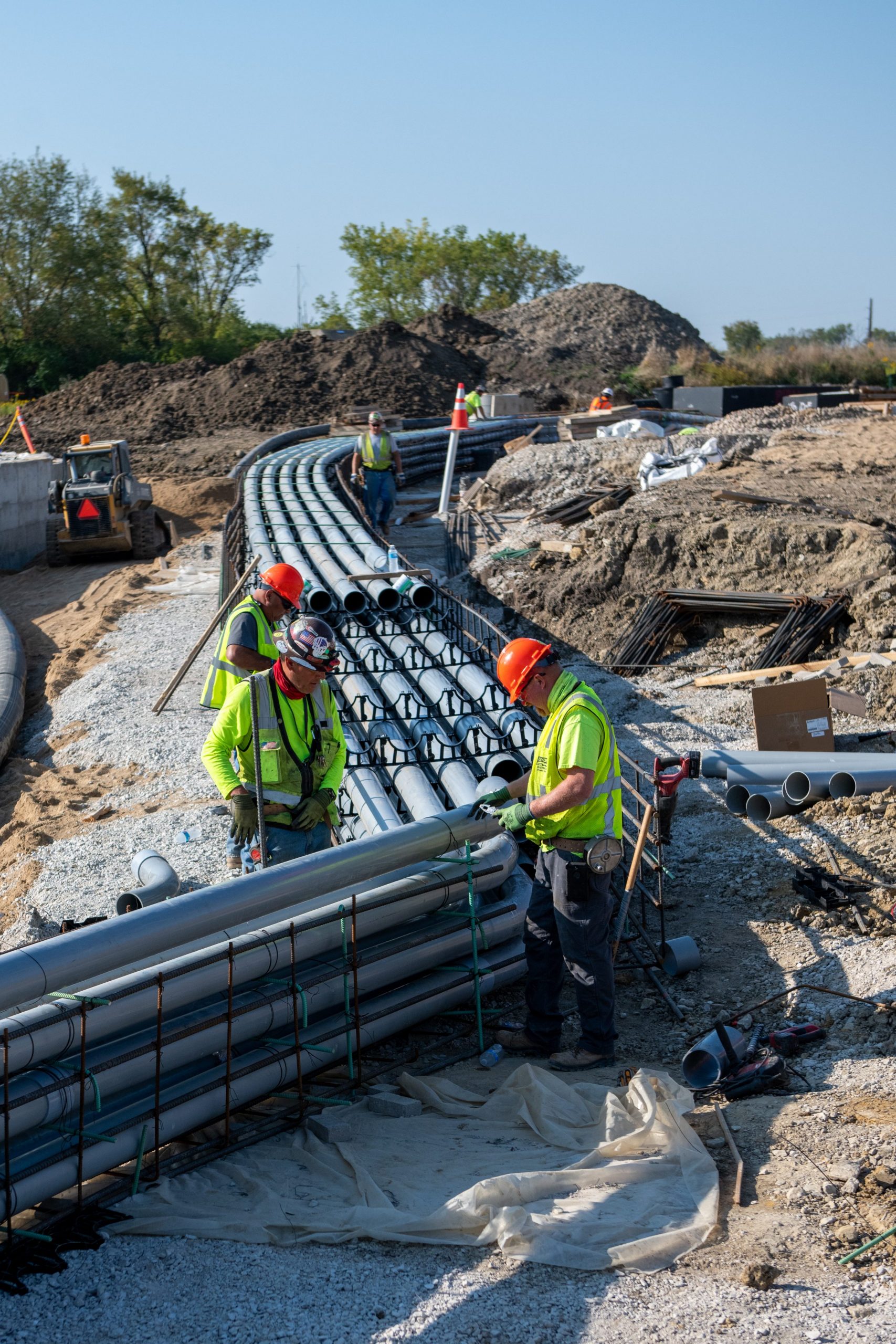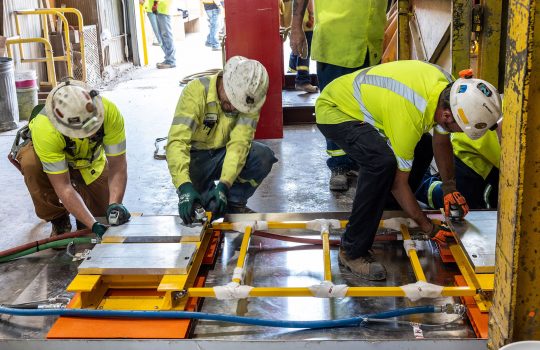All summer long, progress on preparing the Fermilab site for the construction of the Long-Baseline Neutrino Facility has been proceeding at a healthy clip. Now, as summer winds down, that site prep is nearing completion.
LBNF provides the infrastructure that houses and supports the international Deep Underground Neutrino Experiment, hosted by Fermilab. DUNE will comprise a giant neutrino detector a mile underground at the Sanford Underground Research Facility in South Dakota and a large one located on the Fermilab site in Illinois. The development of the latter, known as the “near site,” involves clearing an area currently dense with accelerator-related utilities and other infrastructure.
The site prep work included clearing the site of conflicting infrastructure, including relocating utilities such as power and communications; realigning a small stream called Indian Creek; and replacing an accelerator cooling pond with a cooling tower. The work started last winter, and most of it was completed during the annual summer maintenance shutdown of the Main Injector. The remainder of the prep work will be complete before the lab’s accelerator complex turns on again, and the entire prep work is on schedule to be finished before the end of the year.
View the gallery below for a sample of the busy summer the crews have had preparing Fermilab for LBNF.
The Long-Baseline Neutrino Facility is supported by the Department of Energy Office of Science.
Kate Sienkiewicz is the LBNF Near Site Conventional Facilities project manager at Fermilab.
Fermilab is supported by the Office of Science of the U.S. Department of Energy. The Office of Science is the single largest supporter of basic research in the physical sciences in the United States and is working to address some of the most pressing challenges of our time. For more information, visit science.energy.gov.
June 17, 2025
Particle physics experiments use detectors that are intricate, sophisticated devices for learning about the origins and composition of the universe. The Deep Underground Neutrino Experiment is designed to tackle one of physics’ biggest mysteries — matter-antimatter asymmetry in the universe — by studying neutrinos. Production of Anode Plane Assemblies, detector components that will allow DUNE to achieve exquisite measurement precision, requires skilled technicians, a cleverly designed machine and an incredible attention to detail.
April 21, 2025
After six years contributing to the Proton Improvement Plan-II, Boffo now takes the reins as project director for the major enhancement to the Fermilab accelerator complex.
April 8, 2025
At the Sanford Underground Research Facility, hovercraft technology is being used to efficiently move massive steel beams for the Long-Baseline Neutrino Facility/Deep Underground Neutrino Experiment. Named after a beloved workhorse at the former gold mine that now contains the science facility, “Maggie II” is an innovative solution for the challenges of transporting heavy, awkwardly shaped beams underground to construct one of the largest physics experiments in the world.

